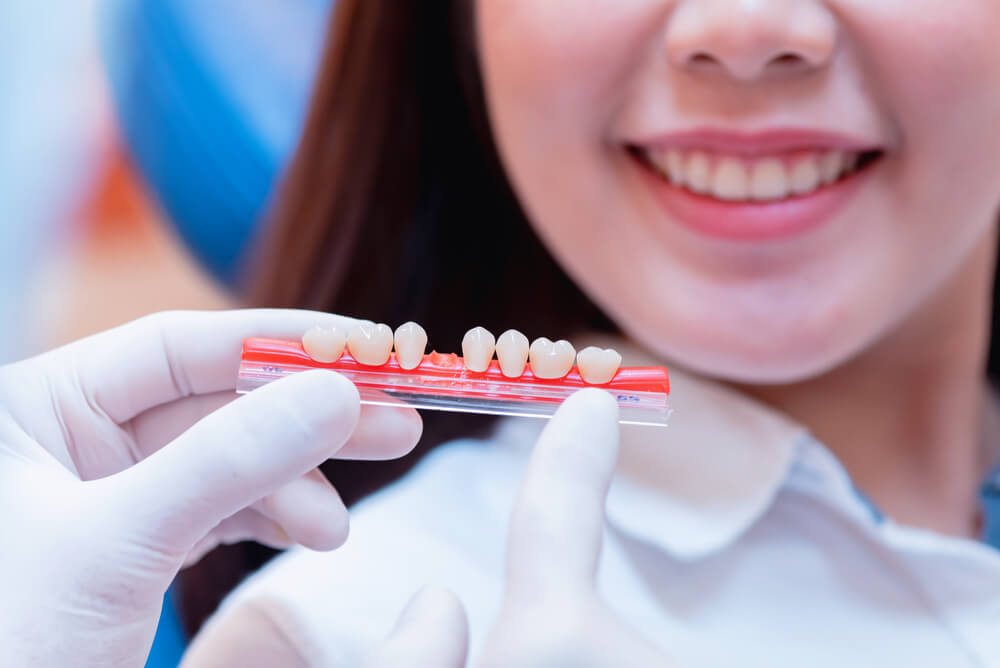A dental crown may sound intimidating at first, but it’s actually a routine and highly effective way to restore a damaged or weakened tooth. Whether your crown is needed due to decay, a root canal, or cosmetic reasons, understanding what the process involves can ease your anxiety and help you feel confident going into your appointment.
At D&F Aesthetics, we believe in transparency, comfort, and care throughout your dental experience. Here’s what you can expect during a typical dental crown procedure—from start to finish.
Why You Might Need a Dental Crown
Crowns are custom-made caps that fit over a tooth to restore its shape, strength, and appearance. They’re used for a variety of reasons, including:
- Protecting a weak tooth from breaking
- Restoring a tooth that’s already cracked or worn down
- Covering a tooth after a large filling or root canal
- Enhancing the appearance of a misshapen or discolored tooth
- Anchoring a dental bridge or topping off a dental implant
Each case is different, so your dentist will explain exactly why a crown is the best solution for you.
The Initial Consultation
Before any work begins, you’ll have a consultation with your dentist to examine the tooth and discuss your options. Digital X-rays or 3D scans may be taken to get a clear view of the damage and to check the surrounding bone and roots.
If the tooth is too damaged or decayed, additional procedures such as a root canal might be required first. But if your tooth is stable and the root is healthy, the crown process can begin.
Step One: Preparing the Tooth
The first step in the crown procedure is shaping the tooth. This involves gently removing a small amount of the outer surface so the crown can fit snugly over it. The amount removed depends on the material used for your crown—porcelain, ceramic, metal, or a combination.
Your dentist will then take an impression or digital scan of the prepared tooth. This impression will be sent to a dental lab, where your crown is custom-crafted to match the color, shape, and size of your natural teeth.
Temporary Crown Placement
While you wait for your permanent crown (which typically takes one to two weeks), your dentist will place a temporary crown over your prepared tooth. This temporary crown protects the area and maintains your smile while the permanent one is being made.
You’ll be given instructions on how to care for your temporary crown. Avoid sticky or hard foods, and be gentle when brushing and flossing in the area.
Step Two: Placing the Permanent Crown
Once your custom crown is ready, you’ll return for a second appointment. The temporary crown is removed, and your dentist will test the fit, shape, and color of the new crown. Minor adjustments can be made to ensure your bite is just right and the crown looks natural.
When everything feels perfect, the crown is permanently cemented into place using a strong dental adhesive. The dentist will polish it and check your bite one last time to make sure everything is aligned comfortably.
How Long Does the Procedure Take?
The dental crown process typically involves two visits—each lasting around 60 to 90 minutes. Some modern practices may offer same-day crowns using CAD/CAM technology, but traditional crowns made by skilled lab technicians remain the gold standard for fit and longevity.
Aftercare and Recovery
Most patients experience little to no discomfort after getting a crown. You might feel slight sensitivity to hot or cold for a few days, especially if the tooth wasn’t previously crowned. This usually fades quickly.
Avoid chewing on very hard foods (like ice or nuts) for the first day or two to give the crown time to fully settle. Brush and floss as you normally would, but be extra gentle around the crown area at first.
With good oral hygiene and regular dental visits, your crown can last 10–15 years or even longer.
What Does a Crown Feel Like?
Your crown is designed to mimic the shape and function of a natural tooth. After a few days, it should feel completely normal in your mouth. If you notice any lingering discomfort, uneven bite, or sensitivity, contact your dentist to have it adjusted. A well-placed crown should feel smooth and allow you to chew comfortably.
Materials and Appearance
Crowns can be made from a variety of materials, each with its own benefits:
- Porcelain or ceramic: Ideal for front teeth due to their natural color and translucency.
- Porcelain fused to metal: Combines strength with a natural look.
- Zirconia: Extremely strong and visually appealing, great for high-bite-pressure areas.
- Gold or metal alloys: Durable and long-lasting, often used for molars.
At D&F Aesthetics, we work with trusted dental labs to ensure your crown not only functions beautifully but also matches your smile seamlessly.
Insurance and Cost Considerations
The cost of a dental crown can vary depending on the material used, the complexity of the case, and whether additional procedures (like a root canal) are needed. Most dental insurance plans cover at least part of the cost of a crown, especially when it’s needed for restorative purposes.
Our office will walk you through your insurance coverage and provide a clear estimate before starting treatment. We also offer flexible payment plans to help make your care more accessible.
Conclusion:
A dental crown is more than just a repair—it’s an investment in your oral health and confidence. Whether you’re addressing damage or enhancing your appearance, the process is safe, straightforward, and designed with your comfort in mind.
If you’ve been told you need a crown—or think you might—our expert team at D&F Aesthetics is here to guide you every step of the way. From your first consultation to the final polish, we’re committed to making the experience smooth and stress-free.
Schedule your appointment today and take the first step toward a healthier, more confident smile.


